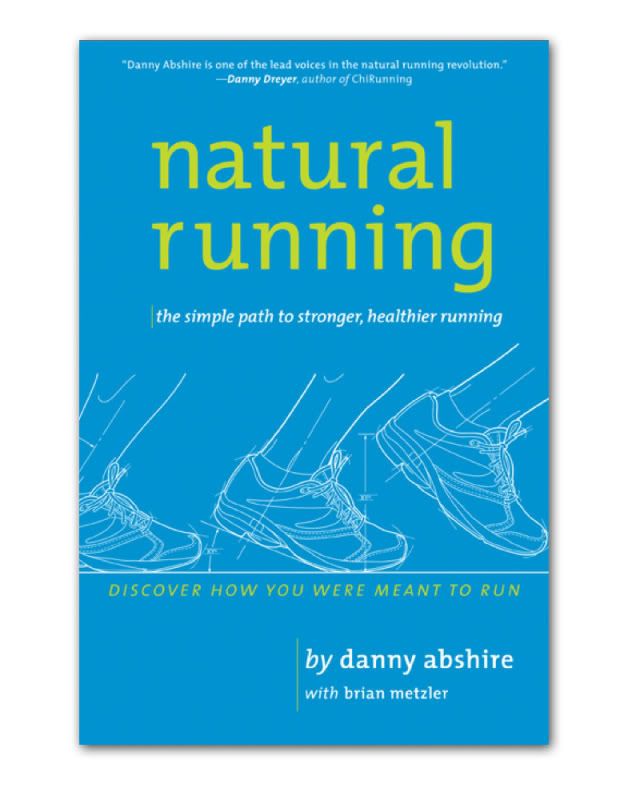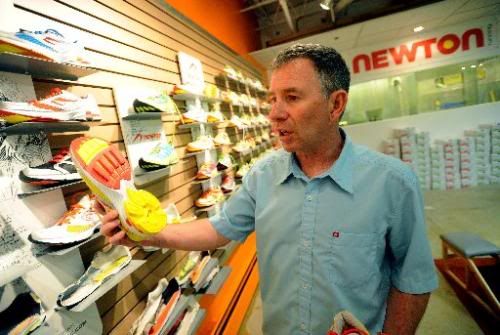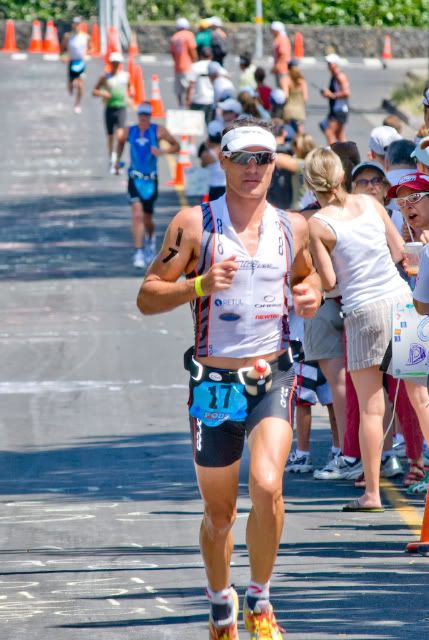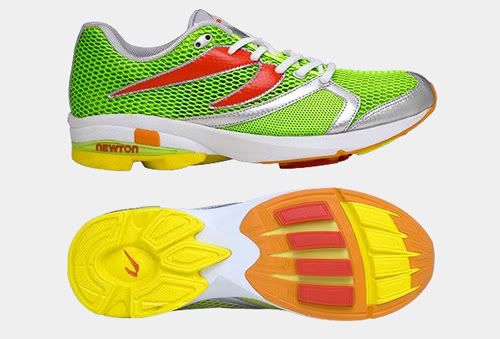
Synopsis: Natural Running aims to fix what ails you, although not in a snake oil salesman kind of way. Danny Abshire’s approach to, let’s say “correct,” running is to take a close look at human anatomy with a critical eye, determine how mechanisms are supposed to work (both as individual components and a collective system) and adjust footwear accordingly. The goal: to help runners run with their body's natural mechanics in order to achieve maximum performance and minimize injury. What's not to like?
A comprehensively instructive work from everyone’s favorite former ski boot guru and current running shoe boat rocker/pot stirrer, Natural Running touches on all the concepts barefooters are familiar with… all the concepts except the presupposition that shoes are a default for runners. That may sound contradictory, but Abshire’s perspective on what correct running looks and feels like and his earnest desire to change the thought patterns of seasoned runners regarding injury prevention, injury treatment, running efficiency, and running performance fall directly in line with the current mode of thought among the growing community of “minimalist” runners spawned by Christopher McDougall’s Born to Run.

The guru right at home with his "Distance" model Newton running shoe. Photo courtesy of Coloradodaily.com.
Summary: The book begins with a bit of background on Abshire’s early days as a ski tech in Aspen and eventual transition to running coach and shoe re-inventor but thankfully does not linger on the author’s relatively dull history. It gets right down to business – running business. The slightly unintentional pun is less appropriate than you might imagine if you are familiar with Abshire and his accomplishments. If you were expecting this book to be a Newton commercial, you will be quite surprised. I fully anticipated a not-so-subliminal onslaught of “buy my shoe because it will fix you”-style self promotion, but that was not the case. Full credit to Abshire for taking the high road of letting the information he presents speak for itself and leaving the reader to connect the dots.
Similar to many other books of this ilk, there is a chapter dedicated to the evolution of the running shoe: from minimalism to heavy, overly technical, heavily cushioned quackery, and back to minimalism. Abshire follows this up with a thorough explication of correct form and how shoes screw us up. His philosophy and how it differs from others is essentially that it emphasizes “the base,” an idea with its origins for Abshire in ski boot orthotic production. Concepts like posture and alignment all trace back to "the base" in this text. In fact, this idea can be clearly observed in the design DNA of Newton running shoes.
Abshire’s ideas of correct form and form flaws are the typical fare. If you have any familiarity with Evolution, Chi, or POSE running techniques, this is very well-known territory. As far as how barefoot running figures in to Natural Running, Abshire spends a maybe three pages total spread through the first few chapters discussing running barefoot although he does have a small section dedicated to Abebe Bikila. Abshire comes across as conflicted regarding barefoot running. He states how running barefoot can be a wonderful form-correcting tool due to effective proprioceptive feedback from the myriad nerve endings in the human foot being completely useless in modern running shoes, and in the same breath he talks of the dangers of exposing our soles to anything but the softest of surfaces. Basically, Abshire adores the human foot as a mechanism of nature and believes that it is perfect in its design. Running barefoot is the way God intended. But wait… don’t go running barefoot. It’s bad. (Say what?) He continues on about how manmade surfaces are detrimental to barefooting for any more than short periods. The “only run barefoot on grass” mantra familiar to so many barefoot runners is the message here as well. It’s basically the opposite of the “shoes as tools” philosophy popularized by Jason Robillard, author of The Barefoot Running Book (review forthcoming).

Craig Alexander, Aussie extraordinaire and 2-time Ironman Triathlon World Champion, runs in Newton shoes. They must be doing something right.
After more technical information about the spinal/pelvic alignment, injury prevention, and the phases of the foot during running and walking gaits, we come to a chapter dedicated to dynamic strength and form drills followed by the final chapter containing an eight-week training plan to fix your form. The drill illustrations are very helpful, and there is nothing confusing about the explanations. The training plan charts and accompanying information is also quite simple as they should be.
My personal critique: I found the book quite dry and often repetitive. Abshire touched on the same ideas and concepts several times in several different chapters, albeit with varying degrees of depth. This is completely understandable, of course, when one begins to grasp that running “naturally,” as the author would put it, is a remarkably simple concept. Instructing someone to do so requires very little in the way of actual instruction. I can imagine the frustration an author may encounter when trying to compile a substantive enough accumulation of content to necessitate 167 pages. I would feel like a high school student trying to stretch what I read in last night’s history assignment into 500 words: World War I was bad. Lots of people died. Franz Ferdinand…. **fall asleep on keyboard** Of course, being a barefoot runner, his multiple contradictions on barefoot running were pretty frustrating to read.
My favorite part of the book and where I believe most runners will find the most value is the section on dynamic strength-building and form-fixing drills. I am nothing if not pragmatic, and I have always found running drills seem to be the shortest way between two points. I gleaned a significant bit of info from this ninth chapter that has already become part of my fitness routine.
Conclusions: Natural Running is a straight-forward, narrative-less work of logical assertions about the correct way to run written for any runner looking to move more efficiently and injury free. Some assertions are well founded in research; some are simply interesting anecdotes of Abshire’s wealth of biomechanical wisdom from coaching experience. But Abshire’s overall message is one barefoot and minimalist runners will likely find rather familiar: run the way your body was designed to run. Every component of the drill and transition plan content is practical and applicable wherever you may lie in the continuum of runner experience and talent. This book will prove quite useful in the future as a resource for me in that regard. I certainly do have lingering questions for Mr. Abshire, however, regarding his primary and necessary tool for ultimate application of this message (which there is almost no mention of in the book, I might add): Newton running shoes. Basically, Abshire and his cohorts placed “lugs” on the front of what is an otherwise completely traditional running shoe resplendent with raised heel (offset by the lugs) and a thick, cushioned (albeit less than a traditional trainer) midsole. Voila! Natural running shoes. Head scratching ensues.

Newton's Distance Racer model. You can't argue with its performance pedigree and the following it has fostered from giants in the Triathlon world, but what about this shoe, other than the reduced heel-toe ramp angle, is "natural" in any way?

thanks for the review. I've been reading a few books on the subject and I too was thrown by the same contradictions. also, the book could have used a better copyeditor. descriptions of the drills contradict what the model is performing. e.g. the object pick up using a single leg squat.
ReplyDeleteThanks Louis! I did notice some oversights after referring back to some of the workouts, but it was well after I published this post. I agree that a bit of copy editing attention could have helped. I wonder how the publishing budget of this book stacks up against other books of this ilk. Would be interesting to look at.
ReplyDelete